How to properly feed your fish in an aquarium?
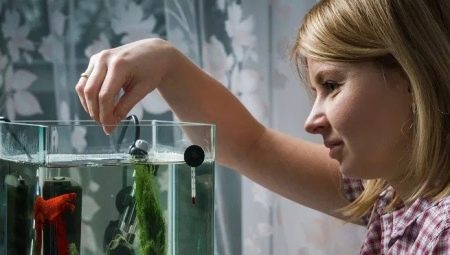
Properly organized feeding of fish in the aquarium is the key to their health and longevity. Although different dwellers have different requirements for their daily diet, what is in common is that it should be moderate and varied.
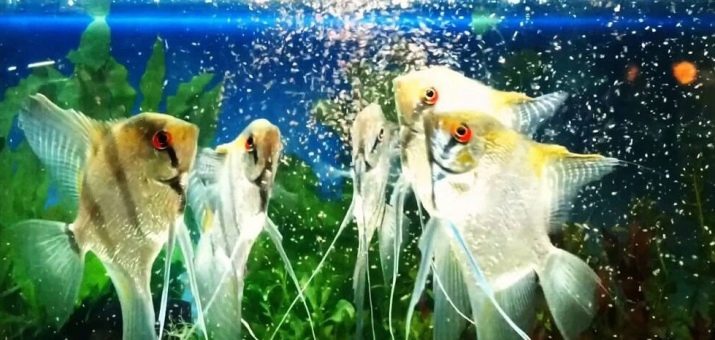
Varieties of feed
Aquarium fish eat four main types of food, which must be combined or regularly alternated. When creatures get a varied diet rich in all the essential nutrients, it has a beneficial effect on their health and even their attractiveness in appearance.
You should be prepared for the fact that even fish have preferences, and some of them can feast on only protein or only plant foods.
Separately, mention should be made of those situations when Skillful aquarists make their own dry or frozen food, which is difficult to attribute to one of the varieties. Alternatively, it can be chopped squid, shrimp and beef hearts, or microwave-dried cottage cheese or semolina.
In order for the fish to grow and develop, she definitely needs vitamins of different groups, choline, folic acid, biotin, thiamine and other substances. In order to form an ideal diet for pets, it is necessary to find out how this species eats in natural conditions. Herbivorous fish have a long digestive tract and prefer to consume fragments of plants, seeds, fruits and, of course, algae.
Predators - the owners of a large stomach, they eat live or dead insects, amphibians, molluscs and even small animals... Finally, omnivores are ready to eat anything.
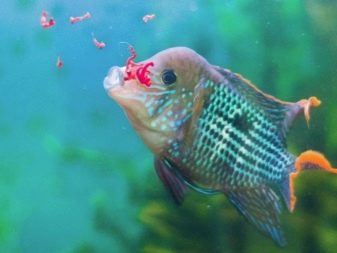
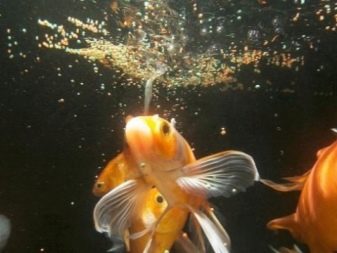
Alive
It is mainly customary to refer live daphnia, bloodworms and corotra to live food. This type of diet is called the most beneficial for fish, but it is rather difficult to store. For example, if you do not remove the dead moth from its living "brothers" in time, then all the food will rot. Live food should be given to fish at least once every two days as an additional feeding. The disadvantage of such nutrition is the introduction of infections into the reservoir in the case when the food was not previously disinfected, but followed "directly" from an open reservoir.
Separately, it makes sense to mention shrimp, which are considered quite healthy, but still high-calorie food. Since the product contains 50% protein and up to 20% fat, it must be included in the fish diet, but only once or twice a week. The shrimp should be fresh, ideally Atlantic. You can offer it to fish both raw and boiled. In both cases, the meat will have to be chopped very finely.
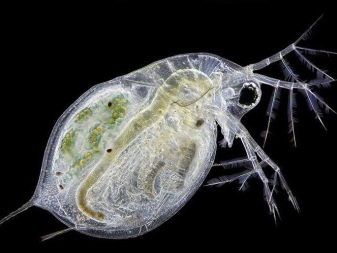
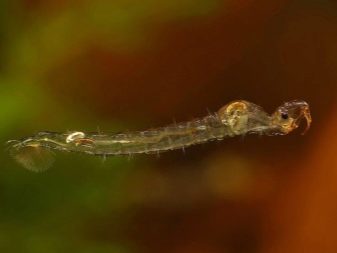
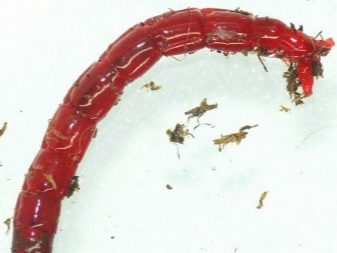
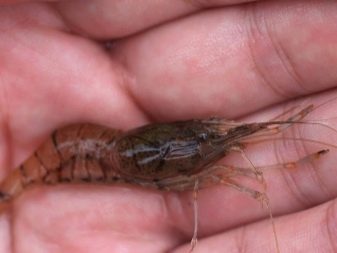
Dry
By dry food, it is customary to mean two types of food for the inhabitants of the aquarium. It can be either a simple combination of dried bloodworms, koretra or daphnia, or a mixture made in production and additionally enriched with vitamins and microelements. The first version is a common protein, which, although it is nutritious, is often poorly absorbed by the fish organism.
In addition, many aquarists are confronted with with the occurrence of an allergic reaction exactly this combination, expressed in the form of a runny nose and redness of the eyes. If branded feed is made by such trusted manufacturers as Sera or Tetra, then you can be sure of the absence of allergies, good absorption and additional enrichment of the diet with useful components.
The range of branded food is wide and allows you to choose a mixture suitable for all inhabitants of the aquarium, from goldfish to catfish. Besides, there are also universal mixtures, balanced in terms of the content of fats, proteins and carbohydrates. Products are formulated to take into account the digestive traits of pets, as well as improve their health and appearance. Such dry food is produced in the form of granules, flakes, as well as their combinations, called creeps.
For dry food, it is imperative to take into account the expiration date and the date of issue. In an airtight container, flakes and granules are stored for up to a year, but still, the longer the feed is not used, the less valuable it becomes. Experts recommend purchasing small boxes and containers that are quickly used.
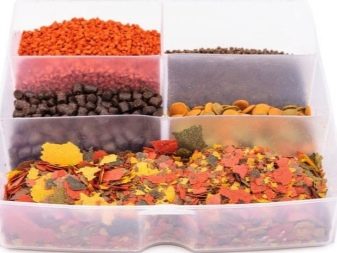

Frozen
Frozen food is the same live food, but frozen. As a rule, it is manufactured in production, undergoes a disinfection procedure and is packaged in convenient briquettes, which greatly simplifies the procedure for feeding the inhabitants of the aquarium. In addition, frozen food is easy to dose and easy to store. In the store, you can purchase both mono-compositions and those that are mixes, for example, from three popular varieties of worms.
If live food freezes on its own, then you can be sure that this procedure will rid it of the existing parasites.
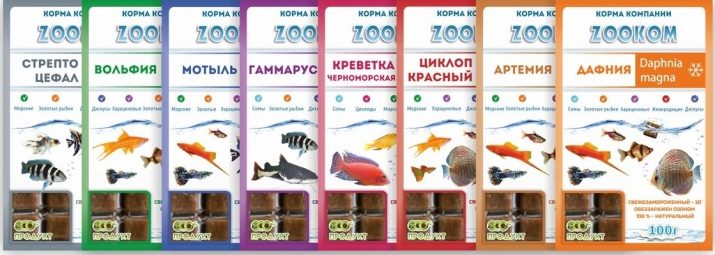
Vegetable
Vegetable food provides the underwater inhabitants with the necessary fiber and allows them to diversify their daily diet. This type of food can be purchased at the store or made by yourself, scalding, for example, a peeled cucumber and chopping it... Other suitable vegetables are zucchini and cabbage... Purchased herbal feed is sold either in the form of tablets or flakes.
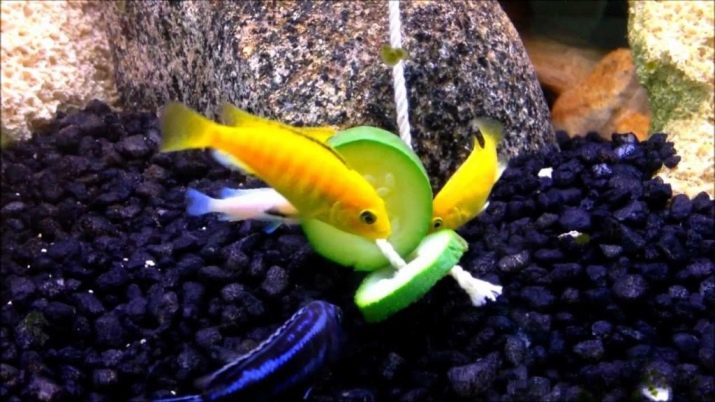
Meals
In fish, there are three ways of feeding, which are determined depending on the location of the mouth. In a general aquarium, it is still better to combine representatives of the same group, since this greatly simplifies the process of feeding them.
- Upper... The upper way of feeding is typical for fish, in which the mouth is located on top. They consume food from the surface of the water, so it is more convenient to feed them with cereals or chips.
- Average. Those pets who prefer a medium-sized diet eat the food that is right in front of them.
- Donny... Fish that prefer the bottom feeding method pick up food from the surface of the soil. In this case, we are talking, for example, about catfish. In order for the food to reach the bottom, it is necessary to pick up heavy and quickly sinking pieces.
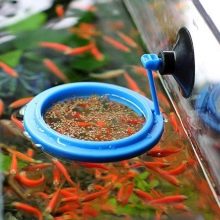
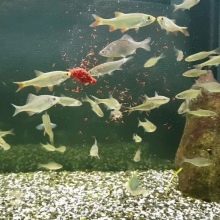
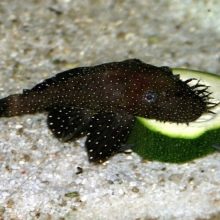
How often should you feed?
You need to feed the fish in the aquarium a couple of times a day - in the morning and in the evening. Some aquarists put in more food in the morning than in the evening, but it is correct to offer pets absolutely equal portions. The feeding schedule is built in such a way that so that once a week there is a fasting day, during which the pets do not receive food at all. This prevents the development of obesity, especially in those fish that have an increased appetite.
When spawning time comes, fasting days are canceled.... Morning feeding is carried out a quarter of an hour after turning on the light, and evening feeding - a couple of hours before bedtime. Catfish and other bottom-dwelling fish are usually fed in the dark when other inhabitants of the aquarium go to sleep.
It is impossible not to mention the feeding of underwater inhabitants during long trips, for example, on vacation.
In fact, adults and juvenile fry can starve without problems for up to three weeks, and some large varieties even longer.
Alternatively, you can install an automatic feeder equipped with a dispenser in the aquarium, or purchase slowly dissolving briquettes and capsules.
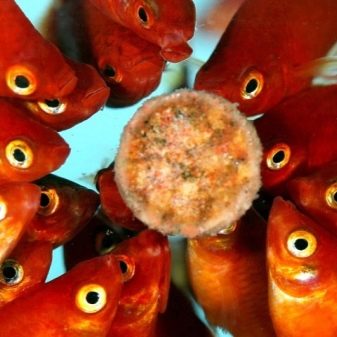
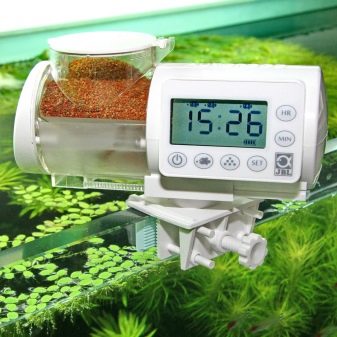
How much to give?
Feeding your domestic fish should be done for a limited period. Experts recommend not feeding them more than feeding them excess food, which will further lead to obesity or problems with the gastrointestinal tract in fish. In addition, excess food disturbs the balance within the aquarium. Leftover feed starts to rot, which in turn pollutes the water and provokes harmful algae.
Moreover, the composition of the liquid does not change for the better - the level of ammonia and nitrates rises... The amount of required food can be calculated depending on the weight of the fish - "lunch" should be about 5% of this indicator. After the meal, the leftovers will have to be caught with a net.
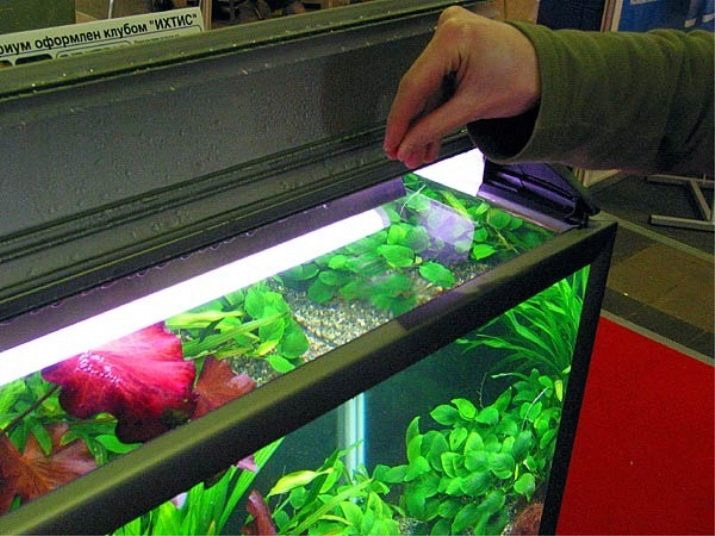
Adult fish
Food for adults can only be poured in such a way that it is eaten in a couple of minutes. It is important that it does not have time to sink to the bottom and mix with the soil there. If plant food is used, then it is lowered into the aquarium in a small piece, and then, as soon as the fish lose interest in him, he gets it back. If you neglect this rule, then the remnants of vegetables can begin to rot.
When catfish, which are known to be bottom dwellers, live in the aquarium, they will have to be fed separately with chips or pills.
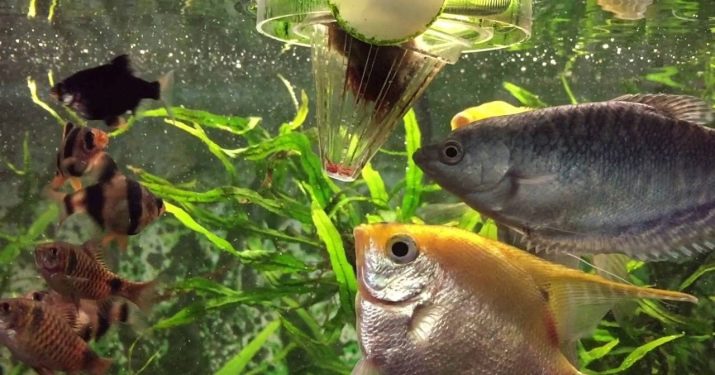
Fry
Fry need a special feeding approach. Between 1 and 2 months of age, feed should be offered four times a day. Until the fish is a month old, food is required even more often - every 3-4 hours. The food should be eaten in a maximum of 5 minutes, and therefore should be no larger than the eye of a fry.... In this case, you will need either specialized food for fry, sold in the store, or rubbed food with your own hands to a state of dust.
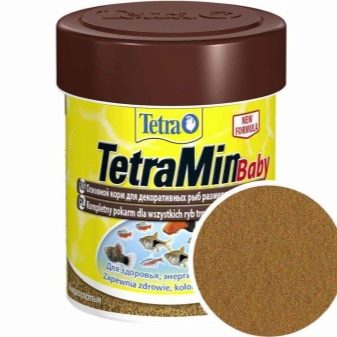
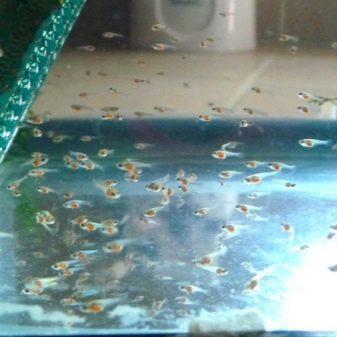
Fasting days
Many inhabitants of the aquarium are prone to obesity. They can gorge themselves to such an extent that it will even become difficult for them to move in space. For such gluttons, for example, goldfish, it is recommended to arrange fasting days once a week.
Better to just pick one day in the week and declare it a day without food.Do not worry that pets will starve - they will only burn excess fat and eat up previously unclaimed pieces.
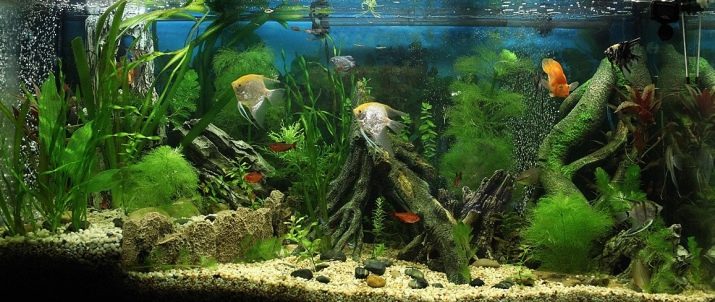
If the species does not suffer from obesity, then you can not completely deprive it of food, but simply refuse live food once a week and replace it only with vegetable food. For example, a diet menu might consist of grated parsley, spirulina, nettle, or seaweed.
Such unloading allows you to cleanse the pet's body, promote recovery processes and even increase libido. It is important to arrange it for predators, but scalars, apistograms and lapius would be good to "sit" on a spirulina diet.
Next, watch a video with expert advice on how and what to feed your aquarium fish.








